NIL
WIAA approves rule change allowing high schoolers to enter some NIL deals
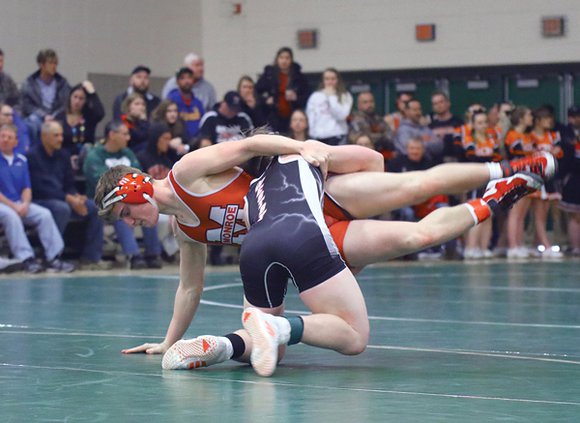

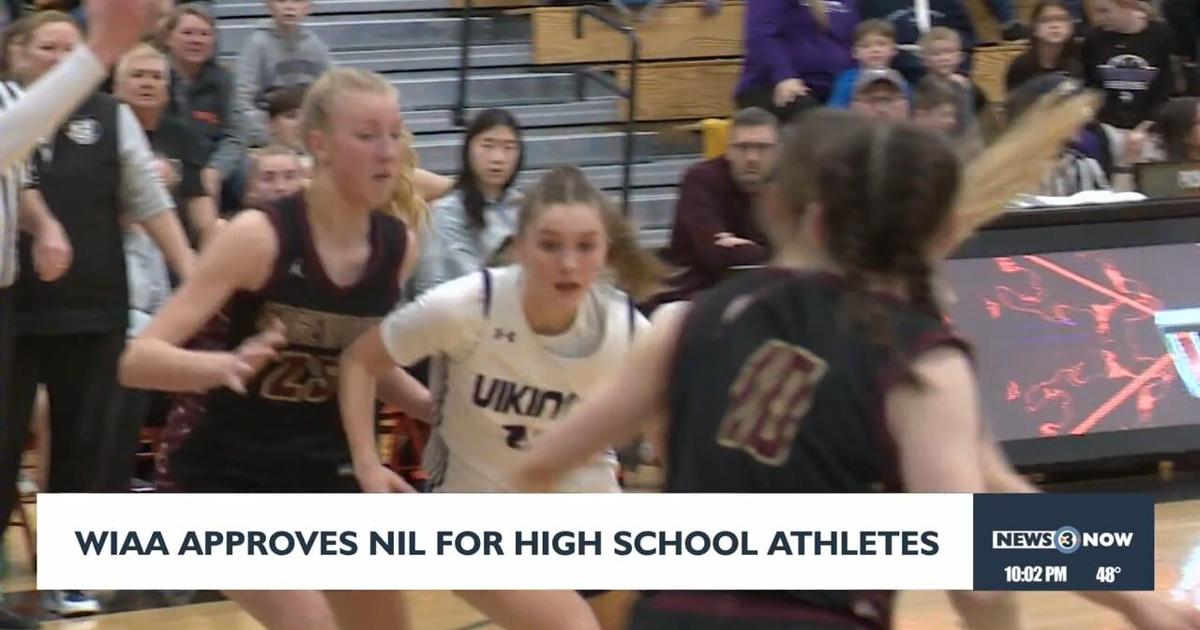
STEVENS POINT, Wis. — Wisconsin high school student athletes will soon be able to enter the name, image and likeness game.
The Wisconsin Interscholastic Athletic Association on Friday approved an rule change that will allow student athletes to take advantage of NIL opportunities. The WIAA joins a growing trend of state athletic bodies that have allowed their students to make money including Illinois, Minnesota and Missouri.
“NIL’s part of the conversation now,” Stephanie Grady said.
A conversation she says is long overdue for high school athletes.
Grady is the founder and CEO of Influential Athlete, which is partnering with WIAA to help student athletes navigate the NIL world.
“It levels the playing field,” she said.
The change doesn’t come without caveats. The NIL deals must be for activities not associated with a student’s school team, school, conference or the WIAA. Students also cannot wear their school team’s uniform in any endorsement deal or use the marks and logos of their school, conference or the WIAA.
“I think the failure the first time around last year really came from a place of just misunderstanding what NIL would look like,” Grady said. “We all see the chaos, but now exists at the college level.”
This year high school athletic directors changed their mind, but MMSD District Athletic Director Jeremy Schlitz said, “nothing changed necessarily, my philosophical, approach.”
But this year he says there are more guardrails in place.
“Obviously, when we bring money and other private interests into education-based athletics, you kind of sell these kind of the purity that is education-based athletics and making sure people understand what impacts it might have,” he said.
“We’re going to be ready for our students to make sure they’re informed about the implications if they were to consider entering and doing NIL,” Schlitz said.
There are also rules surrounding what kinds of NIL opportunities students can take. Deals that promote products associated with gambling, alcohol, tobacco, cannabis, banned or illegal substances, adult entertainment or weapons are explicitly prohibited.
Students’ compensation for NIL deals also can’t be based on their on-field performance, and the deals cannot be provided by a school or persons associated with a school as a means of recruiting or retention.
Under the rule change, NIL activities can’t interfere with a student’s academics, and students cannot miss practices, competitions or other team obligations to participate in NIL opportunities. Students are also barred from hiring an agent, and schools and their employees cannot help facilitate NIL deals for their student athletes.
The WIAA also approved a rule change that would require spectators who are ejected from games for unsportsmanlike conduct to take an online sportsmanship course before they can return to the stands.
“The chaos you see at the transfer portal, where dollars are recruiting athletes to go from one school to the next, couldn’t be allowed at the high school level in Wisconsin,” Grady said.
Schlitz hopes local businesses still partner with high schools themselves.
“I think I’d really encourage our, you know, local businesses or things that do that to really look at ways they can support participation and some of the fundamental things by supporting a whole school program as opposed to focusing on one individual,” he said.
COPYRIGHT 2025 BY CHANNEL 3000. ALL RIGHTS RESERVED. THIS MATERIAL MAY NOT BE PUBLISHED, BROADCAST, REWRITTEN OR REDISTRIBUTED.
NIL
The 5 toughest jobs in college football: Which ones do coaches, staffers consider the hardest?
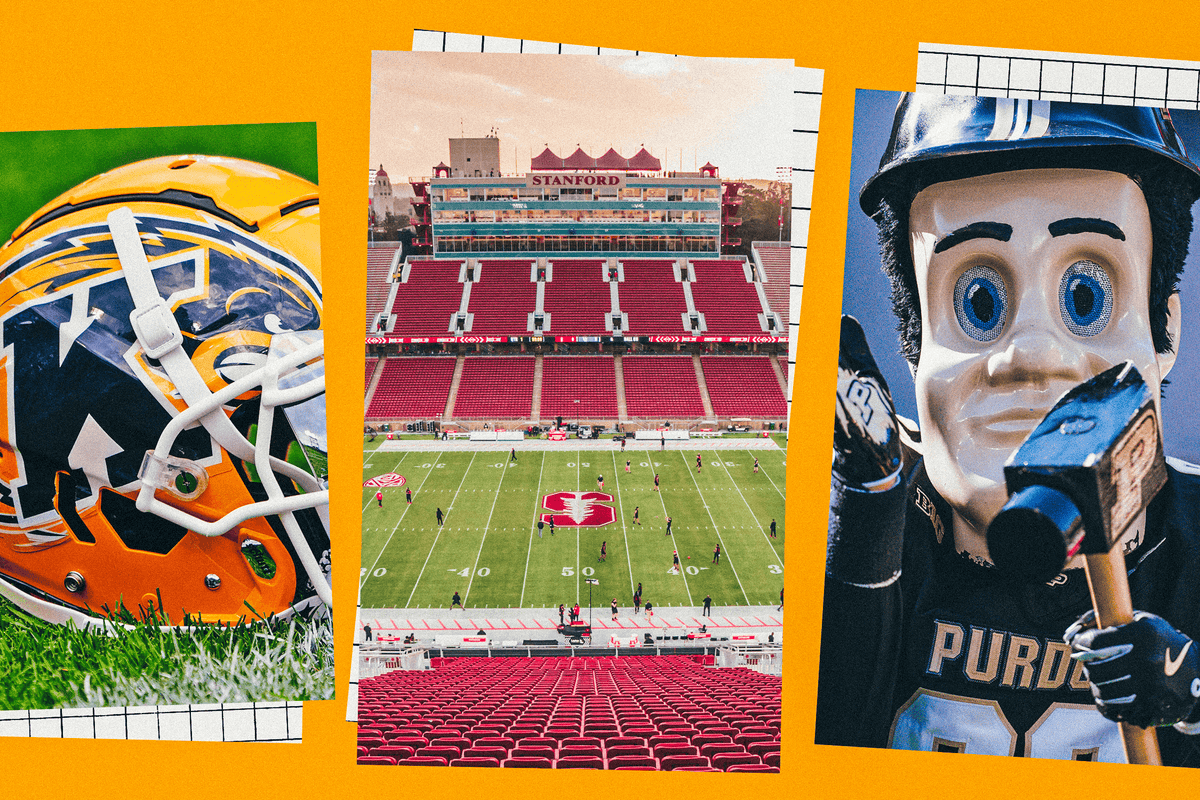
Story by Antonio Morales, Bruce Feldman and Sam Khan Jr.
One of the most active — and no doubt dramatic — coaching carousels took another wild turn when Michigan fired Sherrone Moore on Wednesday. Sixteen Power 4 schools (at least) will have a new coach in 2026. Five SEC schools hired a coach on the same day.
Some of these jobs are set up for a new coach to step in and succeed right away. Others are far more daunting, complete rebuilds at places that have struggled to compete.
A year ago, we polled 50 people in the sport and asked a simple question: What are the top five jobs in college football? Well, this year we’ve flipped it. We’ve asked a mix of coaches, personnel staffers and administrators the following: What are the five toughest jobs in college football?
They were granted anonymity so they could speak candidly.
We asked them to rank five in the Power 4 leagues and five in the Group of 5. The Athletic conducted a similar poll four years ago, but a lot has changed in the sport since then.
Of course, “toughest” can mean different things to different people. It could be the most difficult path to success. Or the most pressure to meet enormous expectations. Or several other things.
So we left “toughest” up to everyone’s own interpretation. Let’s get to the results.
(First-place votes were worth five points, second-place votes were worth four, etc.)
Power 4
1. Stanford
Points: 68
First-place votes: 7
Last winning season: 2020
Stanford received just one point when this exercise was done four years ago. From 2010 to 2015, the Cardinal played in five BCS/New Year’s Six bowl games, and they won at least 10 games six different times during the 2010s.
But times have changed, and the most recent headwinds across the sport have left Stanford in the wilderness. The university’s administration was late to adapt to NIL. Rigorous academic and admission standards make it difficult to add talent through the transfer portal. And the latest wave of realignment resulted in the Cardinal landing in the ACC — an unnatural fit with no real connection to the rest of the schools in the league besides its rival Cal.
“To me, that one jumps off the page,” one Group of 5 head coach said.
“Academic rigor. Difficulty of transfers. Has money,” a Group of 5 offensive line coach said. “But would need a developmental approach and unique style that might take a cycle of older players hitting at the right time.”
Stanford finished the 2025 season 4-8 under interim head coach Frank Reich, which was actually a step up after four straight three-win seasons. General manager Andrew Luck tabbed Tavita Pritchard, a former quarterback at Stanford and, most recently, the quarterbacks coach of the Washington Commanders, as the new head coach.
2. Purdue
Points: 62
First-place votes: 7
Last winning season: 2022
The Boilermakers played in the Big Ten title game in 2022 but have won just seven games in the three seasons since. Coach Barry Odom opened his tenure this fall with wins over Ball State and Southern Illinois, but lost the final 10 games. The Boilermakers lost their last 11 games of the 2024 season, so that’s 21 losses in their past 23 games.
It will take some time for Odom to turn things around, but realignment and the Big Ten getting rid of divisions only made life harder for this program. It doesn’t help that Indiana is thriving now under Curt Cignetti.
“(It’s a) historic talent gap,” a P4 receivers coach said.
“Purdue is the least successful football school in the Big Ten, and I think it has the least amount of money,” a G5 personnel staffer said.
T3. Vanderbilt
Points: 61
First-place votes: 8
Last winning season: 2025
The Commodores recently suffered through 10 consecutive losing seasons but are on a major upswing thanks to their coach/quarterback combination of Clark Lea and Heisman Trophy finalist Diego Pavia. However, there are plenty of people around college football who are skeptical that Vanderbilt, a strong academic school that just clinched the program’s first 10-win season, can maintain this sort of success in a loaded SEC.
“(The) schedule is brutal,” a G5 head coach said. “Pavia is lightning in a bottle. Cannot sustain.”
“It’s the hottest it can ever be,” a P4 cornerbacks coach said.
Lea started off slowly, with three losing seasons to start his head coaching tenure before he broke through with a 7-6 record in 2024. This season was the best in school history. Lea is a Vanderbilt alum who likely could have pursued openings at several other Power 4 schools, but he signed a six-year contract late last month and will remain in Nashville.
“Awesome job six days a week, impossible on the seventh,” a director of player personnel said.
T3. Boston College
Points: 61
First-place votes: 4
Last winning season: 2024
Eagles coach Bill O’Brien enjoyed a solid first season with a 7-6 record in 2024, but he just finished an ugly 2-10 campaign that included only one win against an FBS opponent.
The Eagles won at least eight games every year from 2001 through 2009, but haven’t won more than seven games since. Boston College isn’t in a fertile recruiting area, and it’s not a big NIL spender. So acquiring talent is a problem.
Can O’Brien overcome that?
“Poor recruiting footprint, lack of history, hard to get to and not an ideal conference to recruit to,” a P4 running backs coach said.
“Maybe the hardest (job),” a G5 AD said. “They’re getting the s— beat out of them in every sport.”
5. Rutgers
Points: 56
First-place votes: 4
Last winning season: 2024
Greg Schiano is the only coach who has enjoyed sustained success with the Scarlet Knights. He won nine games or more three times during his first stint at Rutgers, but that’s when the program was in the Big East.
Things are a lot more difficult now in the Big Ten. Schiano has the program in a good place — compared to its early years in the Big Ten — but he still hasn’t won more than seven games in a season during his second go-round.
“Historically bad — now in the Big Ten — what’s the ceiling? Eight wins?” one P4 director of player personnel said. “Only one coach has ever figured it out.”
Toughest jobs, Power 4
| Rank | School | Votes (1st place) |
|---|---|---|
|
1 |
68 (7) |
|
|
2 |
62 (7) |
|
|
T-3 |
61 (8) |
|
|
T-3 |
61 (4) |
|
|
5 |
56 (1) |
|
|
6 |
55 (2) |
|
|
7 |
52 (4) |
|
|
8 |
32 (2) |
|
|
9 |
30 (1) |
|
|
10 |
25 (2) |
Other schools that received first-place votes: LSU (3), Alabama (1), Auburn (1), Iowa State (1), Nebraska (1), Ohio State (1), Oregon State (1), Syracuse (1)
An FBS general manager on Northwestern: “If you have the staff alignment who embrace the degree as a selling point instead of b—-ing about it as a hurdle, you can have a lot of success. Unbelievable facilities and fertile recruiting grounds (relatively speaking).”
A G5 athletic director on LSU: “The pressure to win and the short timeline. You gotta win right off the bat and enamor the fan base and then sustain it. … If you have a one-year trip up, you get fired two years after winning a national championship at LSU or Auburn.”
A G5 athletic director on Iowa State (before Penn State hired Matt Campbell): “I think when Matt Campbell leaves, they’re in trouble.”
A G5 personnel staffer on Alabama: “Any coach for the foreseeable future is going to be measured against (Nick) Saban, who didn’t really have the same challenges of winning that future coaches will have (NIL, expanded College Football Playoff access, etc.).”
P4 receivers coach on Auburn: “Unachievable expectations. Always compared to Bama.”
Group of 5
1. Kent State
Points: 100
First-place votes: 6
Last winning season: 2020
The Golden Flashes removed the interim tag from Mark Carney in late October. He won five games this season, and that should be viewed as a major step forward considering Kent State won just one game over the previous two seasons.
Sean Lewis, currently the head coach at San Diego State, went 24-31 at Kent State from 2018 through 2022, and he was considered a miracle worker.
There’s no real history of success. The resources are lacking, as is the commitment. And there are several losses baked into the schedule every season because the program has to play so many “buy” games against P4 powers — the Golden Flashes played Texas Tech, Florida State and Oklahoma this season.
“Virtually impossible,” a G5 personnel staffer said.
2. UMass
Points: 98
First-place votes: 8
Last winning season: 2010 (FCS)
The Minutemen returned to the FBS ranks in 2012 and have yet to post a winning season. They went 0-12 in 2025 and have lost 16 consecutive games dating back to last season. They haven’t beaten an FBS opponent since October 2023.
It was coach Joe Harasymiak’s first season, so we’ll have to look for any small sign of progress next season. But with no real blueprint or roadmap for success in the program’s history in the FBS, it’s going to be tough.
“Bad location, lack of resources, no history or previous success, hard recruiting footprint,” a P4 running backs coach said.
3. Louisiana-Monroe
Points: 77
First-place votes: 5
Last winning season: 2012
Bryant Vincent won five games in his debut season in 2024, and even though the Warhawks missed out on a bowl game, that felt like a real positive step for the program.
But ULM took a step back this season and won only three games.
“The guy at ULM (Vincent) is the head coach, coordinator and (interim) athletic director. They have no money. That job is impossible,” a G5 athletic director said, before the school named SJ Tuohy as the new AD.
The lack of resources might be insurmountable at this job.
4. Akron
Points: 62
First-place votes: 5
Last winning season: 2015
The Zips have not posted a winning record since 2015. Coach Joe Moorhead led the team to a 5-7 mark this season — a sign of unquestionable progress since the program had not won that many games since going 7-7 in 2017.
Similar to Kent State, the resources and commitment are lacking, though Moorhead has improved things in recent years. He’s won nine games over the past two seasons. The Zips won seven games in the four seasons before his arrival.
“Low resources, poor academics, not a great town, no pedigree,” a G5 personnel staffer said. “It’s a very tough place to sell and win.”
5. UTEP
Points: 59
First-place votes: 3
Last winning season: 2021
Dana Dimel looked like he had things headed in a positive direction with a 7-6 season in 2021, but the Miners won a total of eight games over the next two seasons, and Dimel was fired. Scotty Walden, previously at FCS Austin Peay, replaced Dimel and is 5-19 over his two seasons.
Location was a big talking point when discussing the difficulty of the job.
“You’re in the middle of nowhere, and not in or near a football hotbed,” the G5 personnel staffer said. “Low resources, lack of historical success.”
Walden hasn’t been able to get it going, but not many coaches have in El Paso. Mike Price is the only coach in the past 30 years who has led the program to two winning seasons.
Toughest jobs, Group of 5
| Rank | School | Votes (1st place) |
|---|---|---|
|
1 |
100 (6) |
|
|
2 |
98 (8) |
|
|
3 |
77 (5) |
|
|
4 |
62 (5) |
|
|
5 |
59 (3) |
|
|
6 |
58 (3) |
|
|
7 |
34 (4) |
|
|
8 |
18 (0) |
|
|
9 |
16 (1) |
|
|
10 |
14 (2) |
Other schools that received first-place votes: FIU (2), UConn (2), Boise State (1), Bowling Green (1), Oregon State (1), UAB (1)
A P4 director of player personnel on New Mexico State: “Without Diego Pavia, they have won more games than lost four times in 45 years.”
A P4 offensive line coach: “Wild cards are UConn, Washington State and Oregon State. They are nomads at this point. Not even sure how to rate them.”
A P4 assistant coach on the G5: “Whew, those are way harder jobs now because if you have anyone decent, they leave you. The much shorter list is, what are good G5 jobs?”
NIL
Last Week’s NIL Deals Recap

Data provided by Student Athlete Score
(Dec. 10th, 2025) — Another week, another wave of notable NIL activity across college sports. From Texas Volleyball partnering with Fairfield by Marriott to major football and basketball names teaming up with brands like Raising Cane’s, Whataburger, Dr Pepper, and Puma, this week highlights the continued expansion of athlete-brand collaborations across every corner of the country. Wrestling, softball, gymnastics, track, and hockey athletes also secured meaningful deals—showing just how broad and dynamic the NIL marketplace has become. Below is a full breakdown of the latest partnerships.
For a full, searchable archive of past deals, visit our NIL Deal Tracker.
NIL
Here’s the reason Troy Aikman didn’t get thanked by that UCLA football player
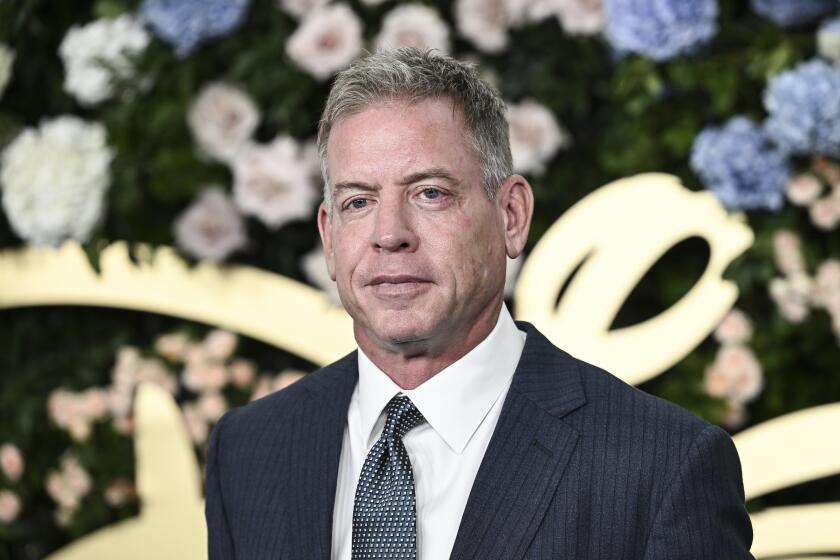
Troy Aikman said he’s “done with NIL” after writing a check to a UCLA football player who never thanked him and went on to leave for another school after one season.
There was a reason for that lack of gratitude, according to one person familiar with the Bruins’ football name, image and likeness operations from that time not authorized to discuss donor information publicly.
Advertisement
The player in question didn’t know who funded his NIL deal, only that it was coming from the team’s collective, Men of Westwood. It was standard practice for players not to know which donors or alumni contributed NIL funds that were distributed to the team.
Aikman, who did not identify the player in his remarks, did receive thanks from Men of Westwood leadership, coach Chip Kelly and athletic director Martin Jarmond, according to the person familiar with the situation.
Read more: UCLA donors question athletic director Martin Jarmond’s leadership, future viability
Aikman, the former UCLA quarterback who led the Bruins to a victory in the 1989 Cotton Bowl before going on to a Pro Football Hall of Fame career with the Dallas Cowboys, voiced his frustrations about NIL on the Sports Media Podcast with Richard Deitsch.
Advertisement
“I gave money to a kid, I won’t mention who,” Aikman told Deitsch. “I’ve done it one time at UCLA, never met the young man. He was there a year, he left after the year. I wrote a sizable check, and he went to another school. I didn’t even get so much as a thank-you note. So, it’s one of those deals, to where I’m done with NIL. I want to see UCLA be successful, but I’m done with it.”
Aikman went on to say he believed that players should be able to leave one school for another amid coaching turnover but should have to otherwise stay with the program paying them.
“There’s got to be some leadership at the very top that kind of cleans all of this up,” Aikman said. “Starting with players that accept money. There’s got to be some accountability and responsibility on their behalf, to have to stick to a program.”
Sign up for UCLA Unlocked for big game takeaways, recruiting buzz and more UCLA sports insights.
This story originally appeared in Los Angeles Times.
NIL
Troy Aikman not thanked by UCLA QB for NIL donation due to school protocol
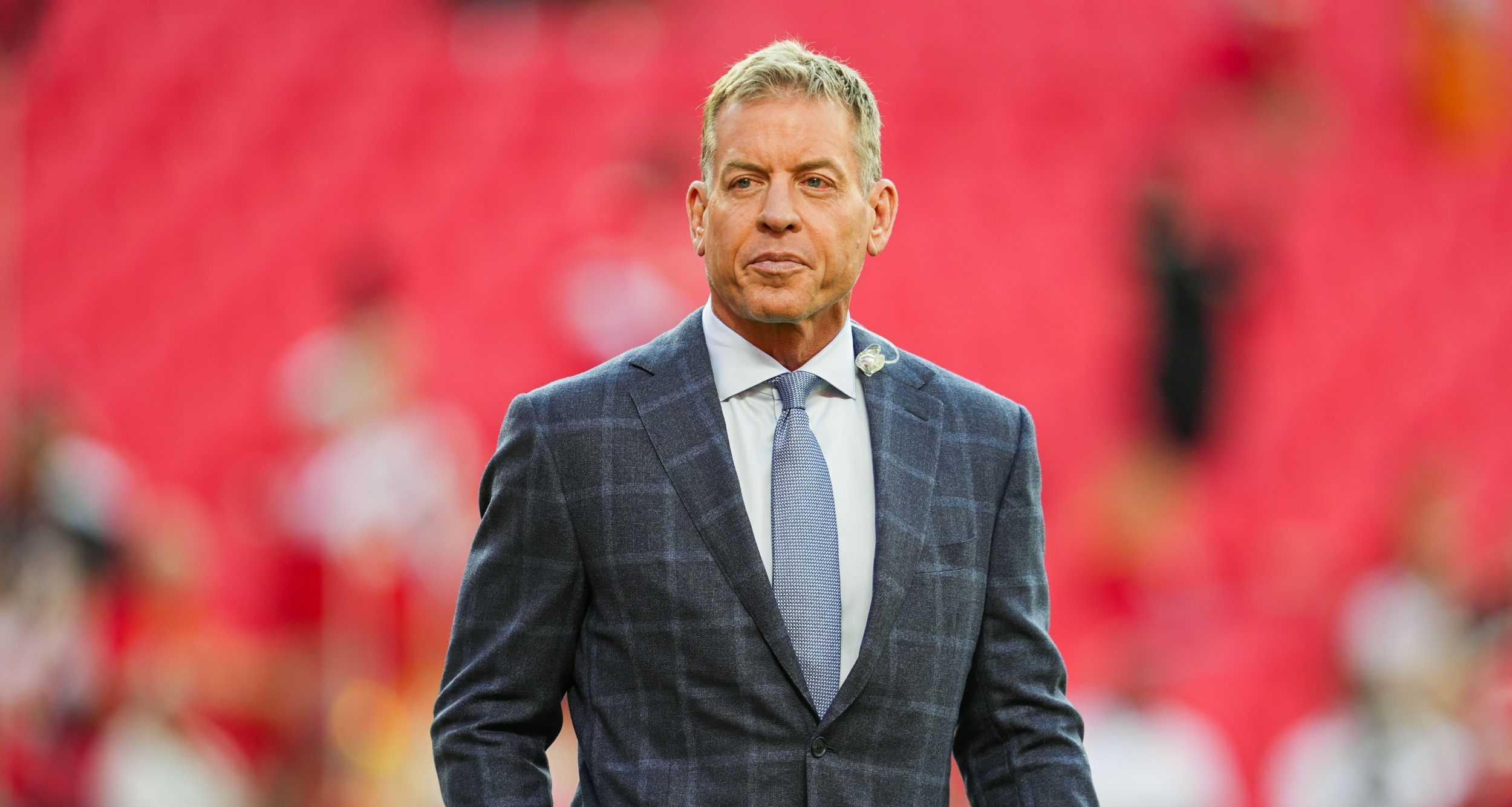
ESPN’s lead NFL analyst Troy Aikman made headlines earlier this week when he took direct aim at what he sees as a flawed NIL system.
Aikman shared a story on a recent episode of the Sports Media with Richard Deitsch podcast about how he made a significant donation to UCLA, his alma mater, to secure a star quarterback recruit. It turns out that recruit played just one year for the Bruins, and didn’t even give Aikman so much as a “thank you” for his hefty NIL payday.
“I gave money to a kid, I won’t mention who. I’ve done it one time at UCLA, never met the young man. He was there a year, he left after the year. I wrote a sizable check, and he went to another school. I didn’t even get so much as a thank-you note. So, it’s one of those deals, to where I’m done with NIL. I want to see UCLA be successful, but I’m done with it,” Aikman explained.
It turns out there was a good reason why Aikman didn’t get a “thank you” from the UCLA quarterback. According to Ben Bolch of the Los Angeles Times, it was a matter of policy.
Per Bolch, “The player in question didn’t know who funded his NIL deal, only that it was coming from the team’s collective, Men of Westwood. It was standard practice for players not to know which donors or alumni contributed NIL funds that were distributed to the team.”
Instead of receiving thanks directly from the player, Aikman was thanked by the Men of Westwood leadership, head coach Chip Kelly, and athletic director Martin Jarmond, according to the Times.
Troy Aikman is far from the only one calling for stricter regulation of NIL. As it stands, the system essentially allows players to be free agents every year, which isn’t ideal for college football as an entertainment product. But Aikman was clearly a bit misguided about what exactly he was getting from his NIL donation. Sure, the money he gave to the collective almost certainly went towards the quarterback he speaks of. But the player won’t know that; he only knows the money is there, not where it came from.
So does Aikman’s broader point about NIL in college football stand? Yes. But if he had a do-over, he might take back his statement that he didn’t receive any gratitude from the player he helped.
NIL
College football star QB sends strong message on $91 million coaching move
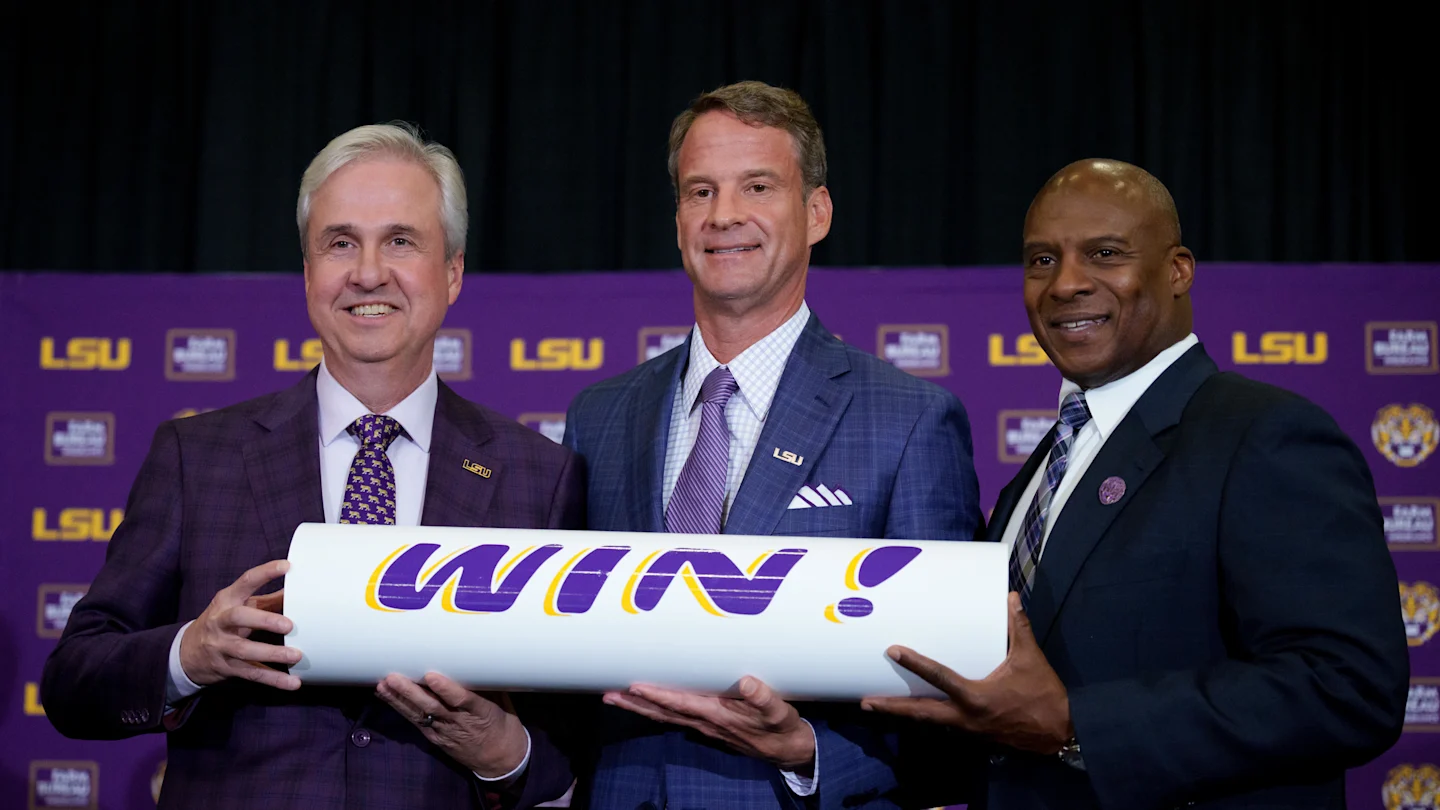
The 2025 college football carousel is spinning faster than it has ever spun before.
In the Power Four ranks, 16 different college football programs have made head coaching changes: Virginia Tech, UCLA, Oklahoma State, Arkansas, Penn State, LSU, Auburn, Florida, Ole Miss, Michigan State, Iowa State, Kansas State, California, Stanford, Kentucky and Michigan.
While this cycle has created chaos throughout the college football landscape, none of the changes compare to Lane Kiffin’s decision to leave Ole Miss, the No. 6 seed in the 2025 College Football Playoff, for the Rebels’ Magnolia Bowl rival in LSU.
The Leadership
The Facilities
The Brand#JustDifferent @Lane_Kiffin pic.twitter.com/qIlsxx9VtB— LSU Football (@LSUfootball) December 8, 2025
The subject of Kiffin’s departure has sparked much debate about leaving a Power Four program while in a position to win championships and about the current layout of the college football calendar.
The Kiffin saga was recently addressed on Outta Pocket, a podcast hosted by Heisman-winning quarterback Robert Griffin III and his wife, Grete Griffin.
On a recent episode of Outta Pocket, the Griffins were joined by current Texas A&M quarterback Marcel Reed as a guest. Grete asked Reed about his reaction to the news of Kiffin’s departure to LSU.
Texas A&M QB Marcel Reed on Lane Kiffin leaving Ole Miss,
“Shoot if $91 Million for 7 years was in front of my face I would not pass it up. 🤣”#GigEm #RG3 #OuttaPocket pic.twitter.com/7bkwSeFWGE
— Robert Griffin III (@RGIII) December 10, 2025
“I felt like it was going to happen,” Reed said. “No disrespect toward Lane or anything, but you can’t talk about it that long and it not happen. If $91 million for seven years was in front of my face, I would not pass it up.”
Coaches are no longer the only ones college football programs are attempting to lure away from their rivals. The work Reed has accomplished at Texas A&M has turned him into a hot commodity for the Aggies and something they need to protect for their future.
Reed came to Texas A&M as the fourth-string quarterback behind Conner Weigman, Max Johnson and Jaylen Henderson in 2023. After very limited action in the regular season, he pieced together a strong first start in a 31-23 Texas Bowl loss after Johnson and Henderson entered the transfer portal.
The Aggies featured Reed in all but their season opener in 2024. He finished his redshirt freshman season with 1,864 passing yards, 15 touchdown passes and six interceptions while rushing for an additional 547 yards and seven touchdowns.
Texas A&M made a significant jump in 2025 thanks to Reed’s guidance. His numbers ballooned to 2,932 pass yards with 25 touchdown passes and 10 interceptions while he rushed for an additional 466 yards and six touchdowns.
The Aggies’ 11-1 record is their best in a regular season since 1992. Their performance has them as the No. 7 seed in the 2025 College Football Playoff, hosting No. 10 Miami (10-2, 6-2) in Kyle Field on Dec. 20 (Noon EST, ABC).

NIL
Why Troy Aikman didn’t get thanked by that UCLA football player
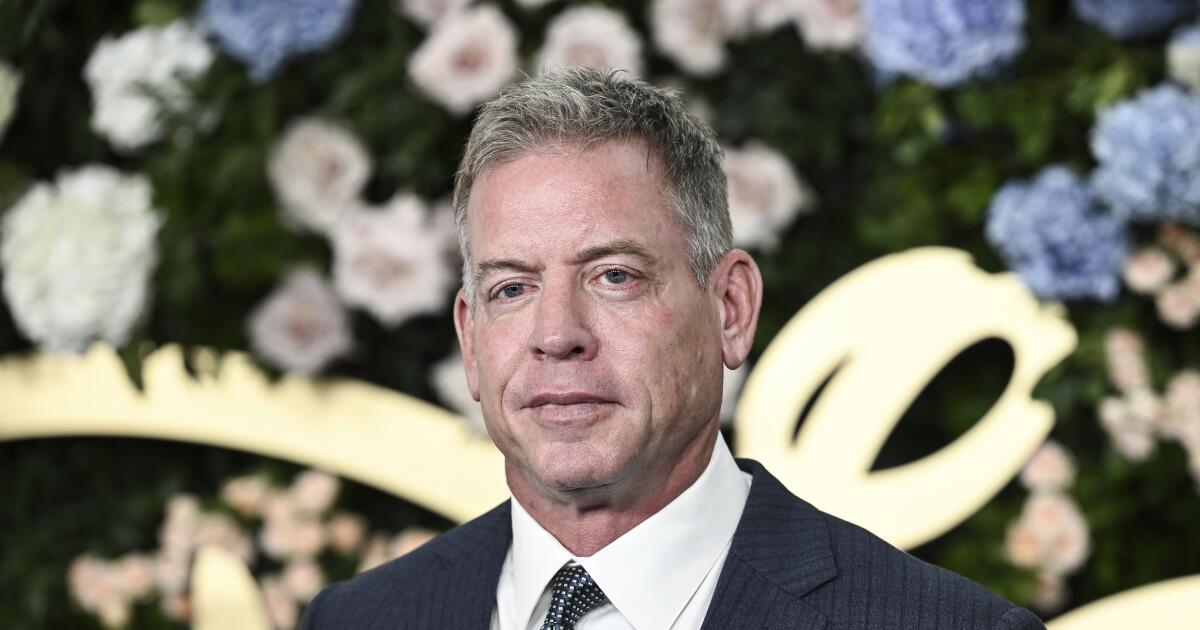
Troy Aikman said he’s “done with NIL” after writing a check to a UCLA football player who never thanked him and went on to leave for another school after one season.
There was a reason for that lack of gratitude, according to one person familiar with the Bruins’ football name, image and likeness operations from that time not authorized to discuss donor information publicly.
The player in question didn’t know who funded his NIL deal, only that it was coming from the team’s collective, Men of Westwood. It was standard practice for players not to know which donors or alumni contributed NIL funds that were distributed to the team.
Aikman, who did not identify the player in his remarks, did receive thanks from Men of Westwood leadership, coach Chip Kelly and athletic director Martin Jarmond, according to the person familiar with the situation.
Aikman, the former UCLA quarterback who led the Bruins to a victory in the 1989 Cotton Bowl before going on to a Pro Football Hall of Fame career with the Dallas Cowboys, voiced his frustrations about NIL on the Sports Media Podcast with Richard Deitsch.
“I gave money to a kid, I won’t mention who,” Aikman told Deitsch. “I’ve done it one time at UCLA, never met the young man. He was there a year, he left after the year. I wrote a sizable check, and he went to another school. I didn’t even get so much as a thank-you note. So, it’s one of those deals, to where I’m done with NIL. I want to see UCLA be successful, but I’m done with it.”
Aikman went on to say he believed that players should be able to leave one school for another amid coaching turnover but should have to otherwise stay with the program paying them.
“There’s got to be some leadership at the very top that kind of cleans all of this up,” Aikman said. “Starting with players that accept money. There’s got to be some accountability and responsibility on their behalf, to have to stick to a program.”
-

 Rec Sports2 weeks ago
Rec Sports2 weeks agoFirst Tee Winter Registration is open
-

 Rec Sports2 weeks ago
Rec Sports2 weeks agoFargo girl, 13, dies after collapsing during school basketball game – Grand Forks Herald
-

 Motorsports2 weeks ago
Motorsports2 weeks agoCPG Brands Like Allegra Are Betting on F1 for the First Time
-

 Motorsports2 weeks ago
Motorsports2 weeks agoF1 Las Vegas: Verstappen win, Norris and Piastri DQ tighten 2025 title fight
-

 Sports2 weeks ago
Sports2 weeks agoTwo Pro Volleyball Leagues Serve Up Plans for Minnesota Teams
-

 Sports2 weeks ago
Sports2 weeks agoUtah State Announces 2025-26 Indoor Track & Field Schedule
-

 Sports2 weeks ago
Sports2 weeks agoSycamores unveil 2026 track and field schedule
-

 Motorsports2 weeks ago
Motorsports2 weeks agoRedemption Means First Pro Stock World Championship for Dallas Glenn
-

 Motorsports2 weeks ago
Motorsports2 weeks agoJo Shimoda Undergoes Back Surgery
-

 Sports2 weeks ago
Sports2 weeks agoTexas volleyball vs Kentucky game score: Live SEC tournament updates

























